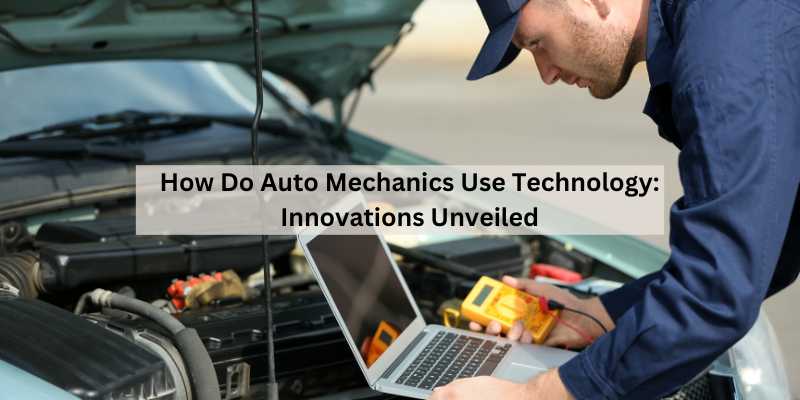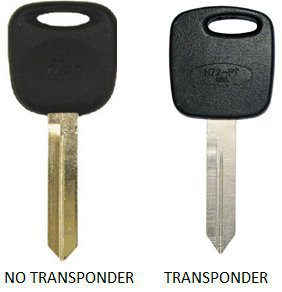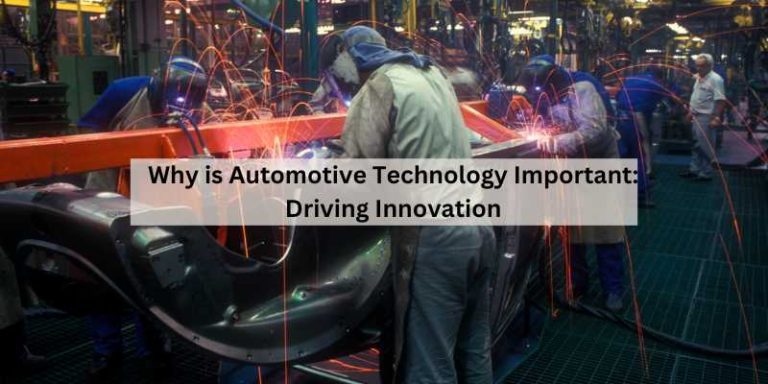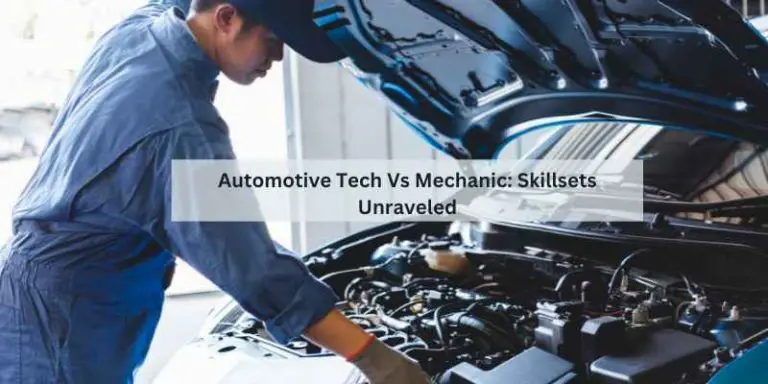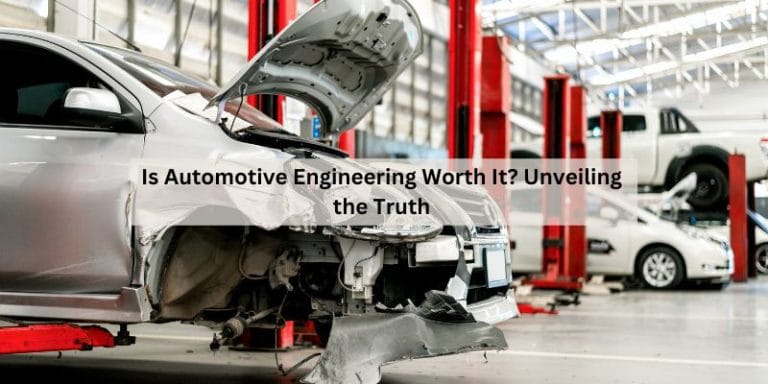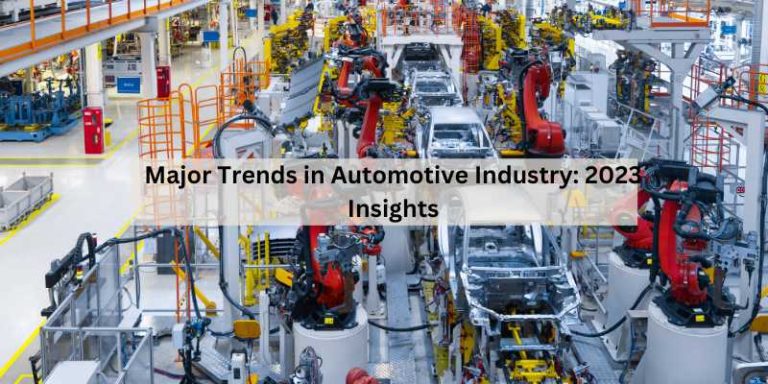How Do Auto Mechanics Use Technology: Innovations Unveiled
Auto mechanics use technology in various ways to diagnose and repair vehicles. One example is through the use of diagnostic scanners and code readers, which connect to a vehicle’s computer system to retrieve error codes indicating engine, emissions, or transmission problems.
Additionally, mechanics utilize tools such as telematics and connectivity to access real-time data about a vehicle’s performance and maintenance needs. This allows them to make informed decisions and provide accurate repairs. Technology also enables mechanics to implement innovative diagnostics processes, such as virtual vehicle repairs through video explanations and remote troubleshooting with the help of augmented reality (AR) technology.
With the advancements in technology, mechanics can now enhance their efficiency and accuracy in providing automotive services.
Revolutionizing Car Maintenance With Telematics
Telematics and connectivity have transformed vehicle maintenance practices. These technologies enable real-time data transmission on performance, maintenance needs, and other crucial information from vehicles to service centers.
Real-time Performance Tracking
Real-time tracking allows mechanics to monitor a vehicle’s performance instantly. This technology provides insights into engine health, fuel efficiency, and overall functionality, enhancing maintenance accuracy.
Remote Diagnostics And Troubleshooting
Through remote diagnostics, mechanics can identify and resolve issues from a distance. This proactive approach streamlines troubleshooting, ensuring efficient repairs and minimizing vehicle downtime.
Advancements In Vehicle Safety Features
Auto mechanics use technology to diagnose and repair vehicles. They utilize tools such as diagnostic scanners and code readers to retrieve error codes and identify issues with the engine, emissions system, or transmission. Advancements in vehicle safety features, such as antilock brakes and lane departure warning, also require mechanics to stay up-to-date with the latest technology to ensure proper maintenance and repair.
Advancements in Vehicle Safety Features
With the rapid advancement of technology, the automotive industry has seen a significant improvement in vehicle safety features. These features not only help prevent accidents but also provide drivers with peace of mind when on the road. In this article, we will explore some of the advancements in vehicle safety features, including automated emergency systems and intelligent driver assistance.
Automated Emergency System
Automated emergency systems are designed to assist drivers in emergency situations. These systems use sensors and cameras to detect potential collisions and warn the driver before it’s too late. Some of the common automated emergency systems include:
– Automatic Emergency Braking: This system detects when a collision is imminent and applies the brakes automatically to prevent or reduce the impact of a collision.
– Lane Departure Warning: This system warns drivers when they are drifting out of their lane, helping to prevent accidents caused by driver distraction or fatigue.
– Blind Spot Detection: This system uses sensors to detect vehicles in the driver’s blind spot and alerts the driver to their presence.
Intelligent Driver Assistance
Intelligent driver assistance systems use sensors, cameras, and other technologies to assist drivers in various situations. These systems work together to ensure drivers are safe on the road. Some of the common intelligent driver assistance systems include:
– Adaptive Cruise Control: This system uses sensors to maintain a safe distance from the vehicle in front, automatically adjusting the speed of the vehicle to avoid collisions.
– Parking Assistance: This system uses cameras and sensors to help drivers park their vehicles safely and accurately.
– Traffic Sign Recognition: This system uses cameras to detect and read traffic signs, providing the driver with relevant information such as speed limits and no-entry signs.
In conclusion, advancements in vehicle safety features have significantly improved the safety of drivers and passengers on the road. With the integration of automated emergency systems and intelligent driver assistance, drivers can enjoy a safer and more convenient driving experience.
Essential Tools For Today’s Auto Mechanics
Auto mechanics today rely on a variety of essential tools to diagnose, repair, and maintain vehicles. These tools have evolved with technology, enabling mechanics to efficiently address complex automotive issues. Let’s explore some of the essential tools used by today’s auto mechanics.
Digital Multimeters And Diagnostic Scanners
One example of how mechanics use technology to diagnose and repair issues is through diagnostic scanners and code readers. These tools connect to your vehicle’s computer system and retrieve error codes indicating problems with the engine, emissions system, or transmission.
Precision Torque Measurement
As a technician, precision torque measurement tools are crucial for ensuring the accurate tightening of nuts, bolts, and fasteners. This helps maintain the structural integrity of the vehicle and ensures that components are securely fastened.
High-tech Hardware In The Mechanic’s Toolbox
Auto mechanics now rely on high-tech hardware to diagnose and repair vehicles. Diagnostic scanners and code readers connect to the car’s computer system to retrieve error codes, while telematics and connectivity enable real-time data transmission for proactive maintenance and servicing.
These technologies have revolutionized the way mechanics maintain and service vehicles, enhancing their ability to address automotive issues efficiently.
The Transition To Smart Tools
Auto mechanics have always relied on their tools to help diagnose and fix vehicles. However, in recent years, there has been a transition to smart tools. These tools use advanced technology to provide mechanics with detailed information about a vehicle’s performance and condition. Smart tools also provide real-time data, making it easier for mechanics to diagnose and repair issues quickly.
Integrating Computers With Mechanical Work
Mechanics are also integrating computers with mechanical work. For example, diagnostic scanners and code readers connect to a vehicle’s computer system to retrieve error codes indicating problems with the engine, emissions system, or transmission. Additionally, there are now automotive diagnostics software programs that use computer algorithms to analyze vehicle data and provide recommendations for repairs.
Overall, the use of technology in the automotive industry has revolutionized the way vehicles are maintained and serviced. With the help of high-tech hardware and smart tools, mechanics are now able to diagnose and repair issues quicker and more efficiently than ever before.
Innovative Diagnostic Processes Simplified
Auto mechanics use technology in innovative diagnostic processes that simplify vehicle maintenance and repair. Diagnostic scanners and code readers connect to a vehicle’s computer system to retrieve error codes indicating problems with the engine, emissions system, or transmission. With the help of new technologies such as telematics, connectivity, and AR, mechanics can provide remote diagnostics and troubleshooting, making car repairs more efficient.
The Role Of Code Readers
Code readers connect to the vehicle’s computer system.
Enhanced Vehicle Scanning Techniques
Advanced scanning techniques identify issues in engine or transmission.
Virtual Vehicle: Explaining Repairs Electronically
Auto mechanics are leveraging technology to provide a virtual view of vehicle repairs, enhancing communication and transparency with customers. By employing electronic means, they can effectively demonstrate repair details and engage in video communication with customers, revolutionizing the traditional repair explanation process.
Video Communication With Customers
Auto mechanics are using video communication to visually explain repair processes to customers. This technology allows them to provide a clear and interactive demonstration of the necessary repairs, fostering better understanding and trust between mechanics and vehicle owners.
Electronic Presentation Of Repair Details
Mechanics are utilizing electronic platforms to present comprehensive repair details to customers. Through digital mediums, they can showcase the specifics of the repairs needed, including visuals, diagrams, and explanatory notes, ensuring that customers are fully informed about the work to be done on their vehicles.
Leveraging Ar For Remote Assistance
Expert Guidance Via Augmented Reality
Auto mechanics utilize augmented reality (AR) for expert guidance, allowing them to receive real-time assistance from remote specialists.
Ar For In-shop Efficiency
AR technology enhances in-shop efficiency by providing mechanics with interactive guides and visual overlays for streamlined repair processes.
Wi-fi And The Future Of Auto Repair
Auto mechanics are leveraging technology like Wi-Fi for real-time data transmission from vehicles. This allows for efficient diagnostics and maintenance, revolutionizing the way auto repairs are carried out in the future. Technology tools such as diagnostic scanners are aiding in identifying and resolving vehicle issues promptly.
Wireless Diagnostics Potential
Telematics and connectivity revolutionized vehicle maintenance.
Vehicles transmit real-time data to service centers for analysis.
Innovations In Remote Vehicle Repair
Diagnostic scanners and code readers help identify engine issues.
Technicians use technology for simplified automotive diagnostics process.
The Role Of Science And Technology In Auto Repairs
The Role of Science and Technology in Auto Repairs
Applying Physics And Chemistry In Mechanics
Auto mechanics apply the principles of physics and chemistry to understand the behavior of automotive components. They use this knowledge to ensure that vehicles function optimally and safely.
The Impact Of Electronics On Automotive Technology
Electronics have significantly transformed automotive technology. Modern vehicles heavily rely on electronic systems for functions such as engine management, safety features, and entertainment. These advancements have necessitated auto mechanics to acquire specialized skills to diagnose and repair electronic components.
Connecting Repair Shops With Customers Through Tech
When it comes to connecting repair shops with customers through tech, auto mechanics are leveraging various platforms to enhance communication and service delivery.
Customer Updates And Communication Platforms
- Real-time updates on repairs
- Interactive messaging systems
- Appointment scheduling apps
Technology Fostering Customer Trust And Engagement
- Transparency through digital inspections
- Virtual vehicle walk-throughs
- Personalized service recommendations
Frequently Asked Questions
How Does A Mechanic Use Technology?
Mechanics use diagnostic scanners and code readers to retrieve real-time data and identify vehicle issues. They also utilize telematics and connectivity for maintenance and service. Additionally, technology enables remote diagnostics and troubleshooting, enhancing the repair process.
How Is Technology Used In Cars?
Technology is used in cars in various ways. Examples include antilock brakes, traction control, electronic stability control, and backup cameras. Mechanics use diagnostic scanners and code readers to identify and repair issues with the engine, emissions system, or transmission. They also utilize tools like torque wrenches, pliers, and screwdrivers for vehicle repair and maintenance.
Additionally, advancements in technology enable remote diagnostics and troubleshooting, allowing technicians to receive real-time guidance from experts. Overall, technology has revolutionized the automotive industry, making vehicles safer and more efficient.
What Kind Of Tools Do Auto Mechanics Use?
Auto mechanics use a variety of tools for vehicle repair and maintenance, such as jack, torque wrench, pliers, screwdrivers, ratchets, sockets, air compressor, multimeter, pry bars, hammers, wire cutters, and vice grips. They also utilize diagnostic scanners and code readers to diagnose and repair issues by connecting to the vehicle’s computer system.
Additionally, technology like virtual vehicle and augmented reality enables remote diagnostics and troubleshooting. Wi-Fi innovations may allow mechanics to diagnose auto repair issues remotely.
What Hardware Do Mechanics Use?
Mechanics use a variety of tools for vehicle repair and maintenance. Some common hardware includes ratchets, wrenches, sockets, screwdrivers, pliers, and diagnostic scanners. They also utilize technology such as telematics, connectivity, and diagnostic software to gather real-time data and diagnose issues with the vehicle’s engine, emissions system, or transmission.
Additionally, advancements like augmented reality (AR) and Wi-Fi connectivity are being explored to enable remote diagnostics and troubleshooting.
Conclusion
In today’s automotive industry, technology plays a crucial role in the work of auto mechanics. From diagnostic scanners and code readers to virtual vehicle repair videos, mechanics now have innovative tools at their disposal. These technologies enable them to efficiently diagnose and repair issues, provide real-time guidance, and even remotely diagnose problems through Wi-Fi.
By embracing technology, mechanics can enhance their skills and deliver better service to customers. With advancements in telematics and connectivity, the use of technology in the automotive field will continue to evolve and revolutionize the way vehicles are maintained and serviced.

